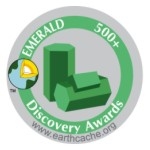
LEE COUNTY SPRINGS

Lee County Springs is located on US 15 and SC 34 just NE of Bishopville, SC. It is North of I-20 and roughly half way between Columbia and Florence.
This Earthcache is wheelchair accessible.
ARTESIAN SPRINGS
Water issuing from an artesian spring rises to a higher elevation than the top of the confined aquifer from which it issues. When water issues from the ground it may form into a pool or flow downhill, in surface streams. Sometimes a spring is termed a seep. Minerals become dissolved in the water as it moves through the underground rocks. This may give the water flavor and even carbon dioxide bubbles, depending upon the nature of the geology through which it passes.
Mineral water is water containing minerals or other dissolved substances that alter its taste or give it therapeutic value. Salts, sulfur compounds, and gases are among the substances that can be dissolved in the water. Mineral water can often be effervescent. Mineral water can be prepared or can occur naturally.
Springs may be formed in any sort of rock. Small ones are found in many places. In Missouri, the largest springs are formed in limestone and dolomite in the karst topography of the Ozarks.
Both dolomite and limestone fracture relatively easily. When weak carbonic acid (formed by rainwater percolating through organic matter in the soil) enters these fractures it dissolves bedrock. When it reaches a horizontal crack or a layer of non-dissolving rock such as sandstone or shale, it begins to cut sideways, forming an underground stream. As the process continues, the water hollows out more rock, eventually admitting an airspace, at which point the spring stream can be considered a cave. This process is supposed to take tens to hundreds of thousands of years to complete.
Origin of the word Artesian.
Artesian wells were named after the former province of Artois in France, where many artesian wells were drilled by Carthusian monks since 1126. [Frances Gies and Joseph Gies, "Cathedral, Forge, and Waterwheel" subtitled "Technology and Invention in the Middle Ages". Harper Perennial, 1995 ISBN 0-06-016590-1, page 112.] The technique was also known much earlier in Syria and Egypt, [For references on ancient uses, see Michel Wuttmann, [http://www.achemenet.com/pdf/jasr/jasr2000.1.pdf "The Qanats of 'Ayn-Manâwîr, Kharga Oasis, Egypt"] , in "Jasr" 2001, p. 1. and [http://www.carlo-bergmann.de/Discoveries/discovery.htm Discoveries in the Western Desert of Egypt]] although whether the monks of Artois learned of it from outside sources or discovered it independently is unknown.
Springs are often classified by the volume of the water they discharge. The largest springs are called "first-magnitude".
Spring flow scale
0 Magnitude - no flow (sites of past/historic flow)
1st Magnitude - > 100 cubic feet per second (cfs)
2nd Magnitude - 10 to 100 cfs
3rd Magnitude - 1 to 10 cfs
4th Magnitude - 100 gal/min - 1 cfs (448 gal/min)
5th Magnitude - 10 to 100 gal/min
6th Magnitude - 1 to 10 gal/min
7th Magnitude - 1 pint to 1 gal/min
8th Magnitude - Less than 1 pint/min
To log this cache, email me and answer the following questions:
1. Take a large mouth one gallon container and fill it at the springs. Use a stop watch or your regular watch to time the amount of time it takes to fill the gallon container. Convert this to gallons per minute. If it takes 5 seconds to fill the container that would be 12 gallons per minute, 10 seconds would be 6 gallons per minute, etc. What is the number of gallons per minute coming from this spring?
2. What is the magnitude of this spring, at the above listed coordinates, according to the scale above?
3. What is the temperature of the water (bring a thermometer with you to take the temperature)?
4. Photos are fun and further proof that you have actually been to this spring site; if possible, upload a photo of you and/or your group with a GPSr at the above coordinates and the springs in the background with your "Find Log".
I request that you email your answers to me on the same day that you log your “found it” log. (This does not have to be the day you visit, just the day you log the find on the computer.) I also request that you do not log a “found it” log unless you have actually visited the site of the earthcache and sent the answers to me. The only person who really benefits from your visit is YOU.
Each cacher is required to send the required information and not rely on another cacher to provide it. Failure to follow this procedure will result in a deleted log. It is not my job to keep track of your group.
XXXXXXXXXXXXXXXXXXXXXXXXXXXXXXXXXXXXXXXXXXXXXXXXXXXXXXXXXXXXXXXXXXXXXXXXXXXXXXXX
We became Platinum Earthcache Masters on September 17, 2007.
We were the first to request and receive on July 2, 2011 the Emerald Discovery Award for finding 500 or more Earthcaches.
We received the Diamond Discovery Award on June 17, 2012 for finding 1,000 or more Earthcaches.



XXXXXXXXXXXXXXXXXXXXXXXXXXXXXXXXXXXXXXXXXXXXXXXXXXXXXXXXXXXXXXXXXXXXXXXXXXXXXXX
